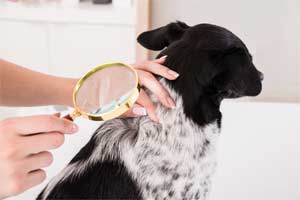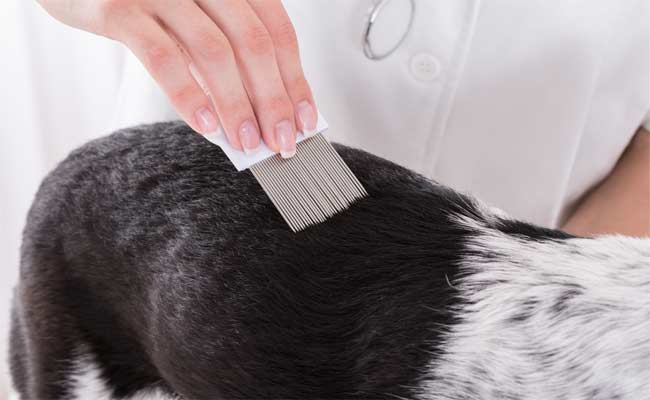Well, Lice are something generally associated with cats, however as pet owners are extremely conservative and concerned about the behavior and health of their health, they even keep on asking whether a dog can get lice too or not! Providing a detailed guide and answer to this, fit let us clear the fact that lice can never get transferred from a human body to that of dogs and vice versa. However, the bad part about lice is that there are times when your dog may get some of these, but you may yet consider it as just random fleas that he would have picked up from the park while playing outside. But, don’t make this mistake as your dog can also get attacked by the unwanted lice. To know more, read through!

What dog lice actually are?
Dog lice can generally be characterized and immediately caught as those insects that are flat, small, have wingless 6 legs and can be extremely harmful to your dog. They majorly live upon the feathers and hair of the birds and mammals, and they contain strong, powerful claws just like hooks that can be seen at their legs ends. These claws make it much easier for them to grasp tightly upon the feathers or the hair shafts of other animals. People, who are aware of cat lice, this might not be something new for them. But another interesting part is that such lice have got tailored claws that can only fix up well on their host’s hair, thus every animal has a different kind of lice and they cannot get transferred from one body to another.
When compared to fleas or ticks, lice do not have the ability to hop around and bother every person or mammal around, thus they are even less common to be picked up and they create just a feeling of itchiness, irritation and great frustration for their elimination. But, going by the fact, as soon as lies find their species, you can’t definitely avoid them as they will get clinched into the body of the mammal through their sharp claws.
Know about the common signs as well as noticeable symptoms of lice
The most effective way to figure out that your dog is seriously affected by lice or not is to keep a check upon its skin. Just like various human parasites, you can see these lice walking around or crawling upon the surface of the dog’s skin while sucking up the blood. To know more, you can part the hair of your dog and keep a check on the shaft, as you focus deeply, you can witness the adult lice crawling somewhere around the place.
You can easily detect these adult lice because they are around 3 millimeters long and absolutely about the size of sesame seeds. They even have a tanned or yellow color, so make sure that next time you detect something as such, its lice! People might sometime consider these lice as dandruff so; it is something that you should be completely skeptical and aware about. Try removing these from the hair of your dog by shaking the head off, if these fall out, then they are the dandruff flakes, however, if you still see them sticking back on the shafts, you must now deal with the stubborn lice. To detect them more significantly, you can look for some of these signs or symptoms-
- Infections or small wounds that your dog might get due to continuous bites by the lice
- Matter fur or dry coat
- Hair loss- which can often be detected around ears, neck, upper back, rectum, and groin
- Redness of skin at various parts of the body
- Itchiness as well as restlessness
- Anemia-this can be expected after long-term untreated infestation and when the case gets severe.
How can you get rid of these irritating dog lice?
Most of the tick and dog flea preventatives are eventually designed by doctors to make the presence of lice highly reduced in dogs. Another amazing thing to keep in mind is that these lice are typically visible on older, stray, sick or feral dogs. So, if you always take proper care of your dog and keep him clean and infection free, then these lice will get less attracted to your dog. Still, if in any manner he gets them, so, the variety of the treatment will differ based on the overall intensity of infestation. There are numerous useful treatment alternatives available, however, professionally and scientifically designed pesticides turn out as the most useful ones. These include- Imidacloprid, Fipronil, Selamectin, and Permethrin. But make sure, that if you own both cats and dogs, then keep your cats away from the pesticides and dog as these can turn out as highly toxic for your cats to ingest.

Vivan Henderson, a professional photographer born in Texas. Photography is his passion. He was fond of nature in his childhood. So he took his passion as a profession. He is basically nature photographer but also take other type of photo. He completed graduation in computer science from Texas Tech University. He lives in Houston with his wife and two children’s.





